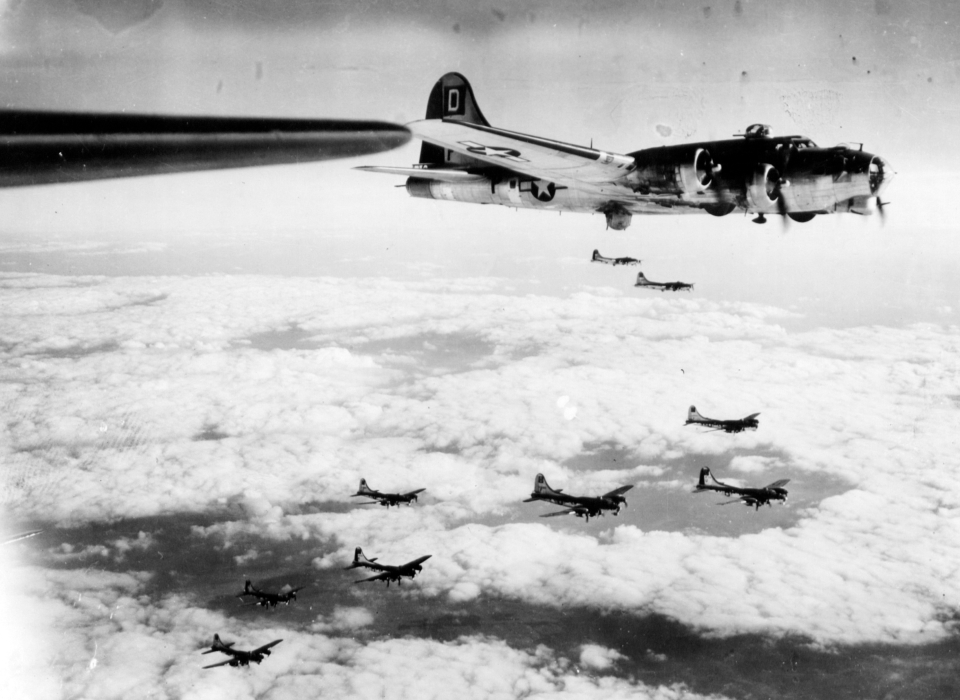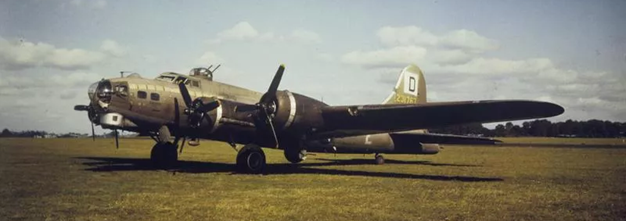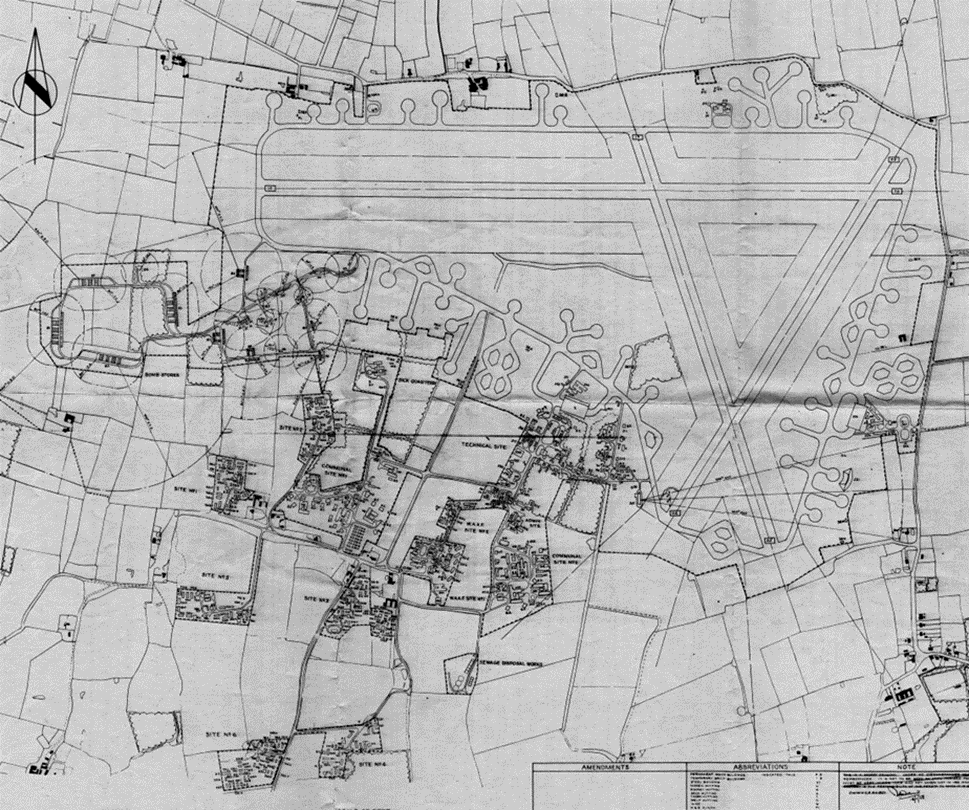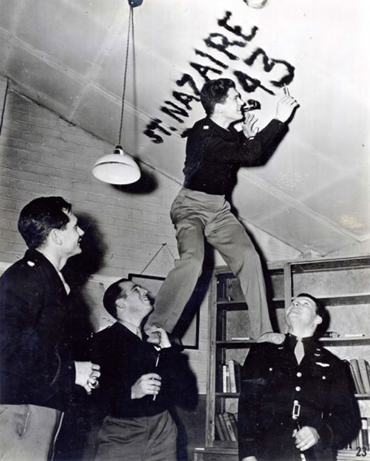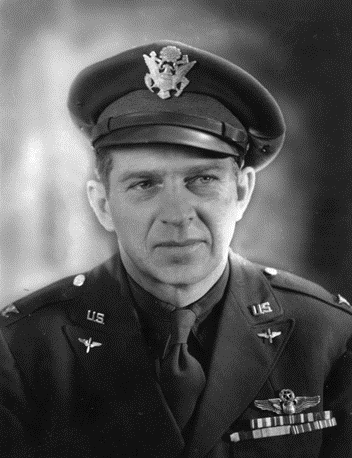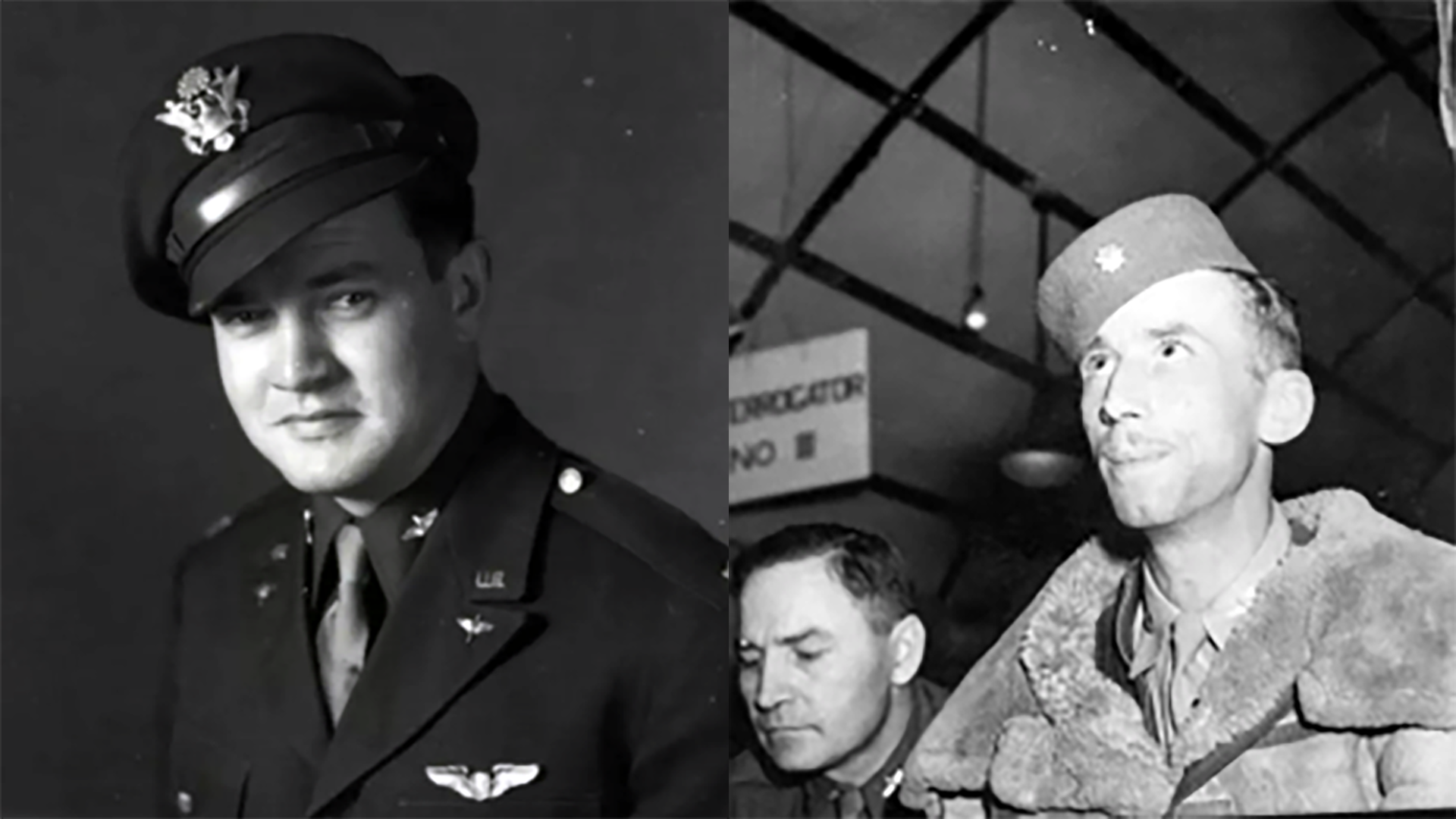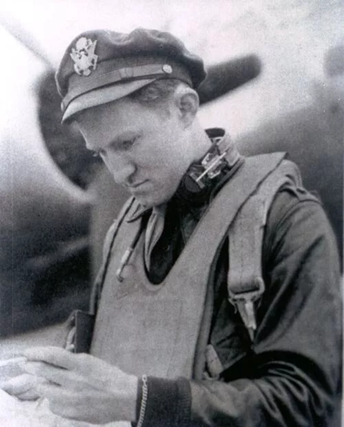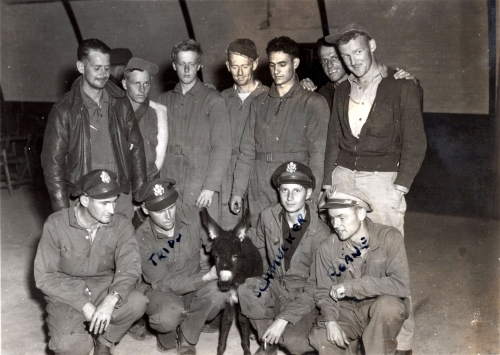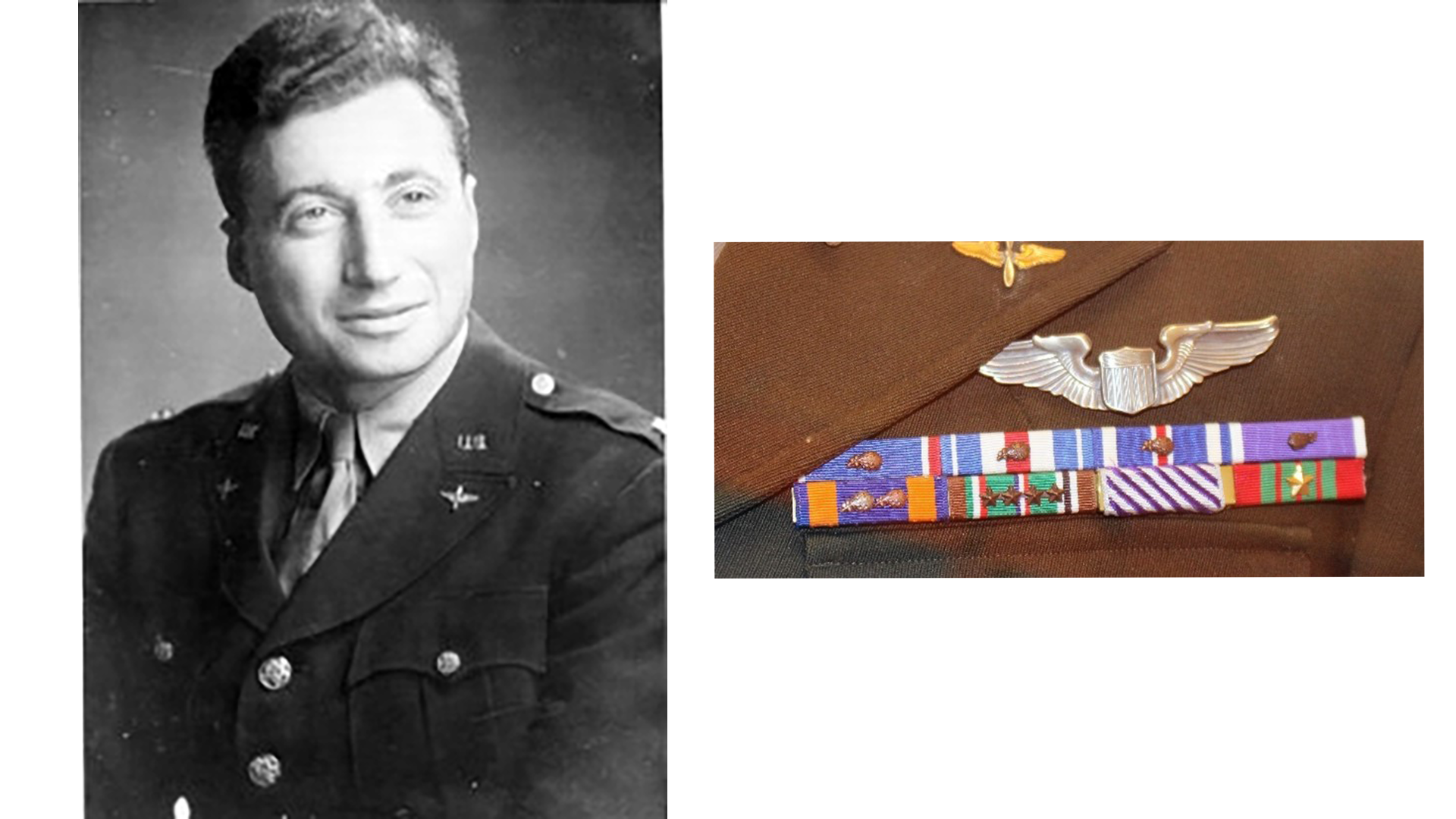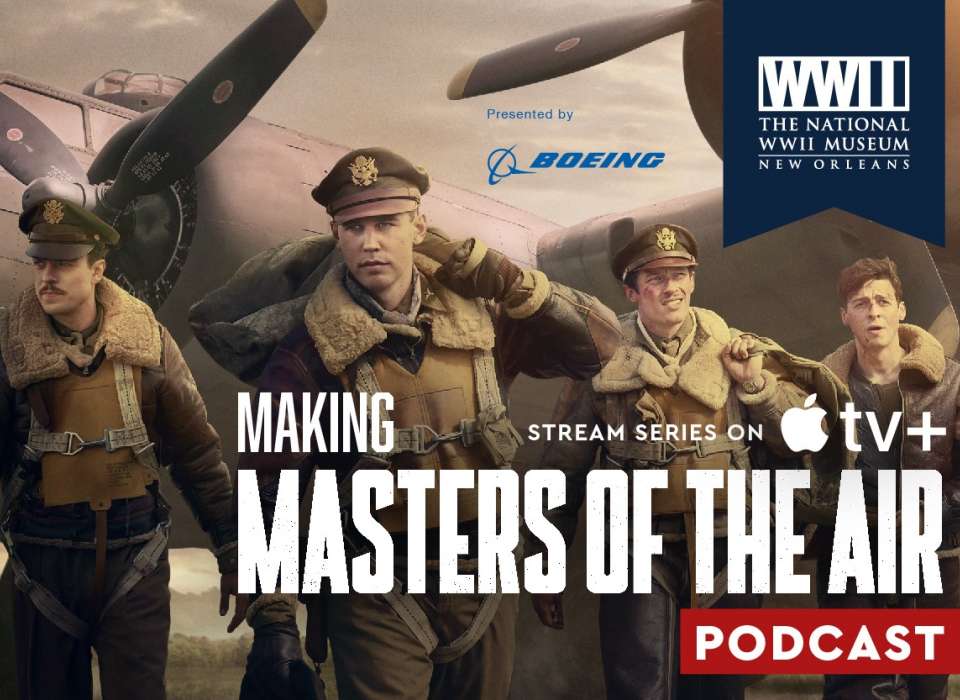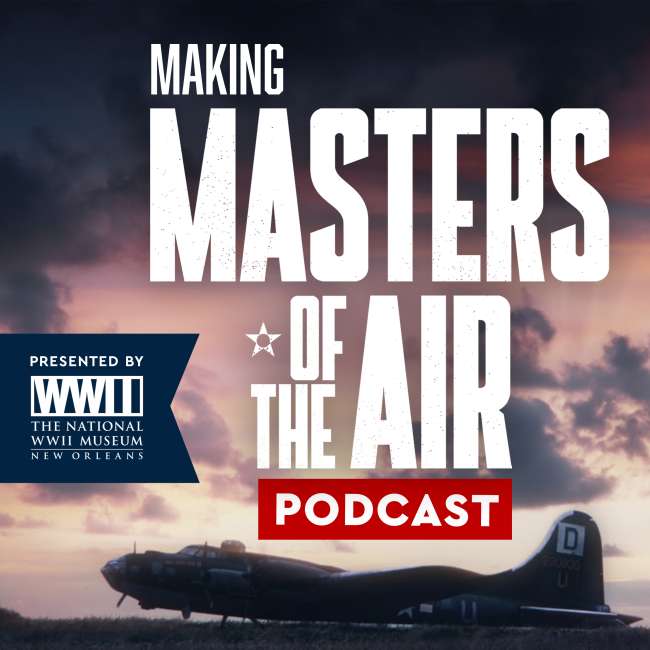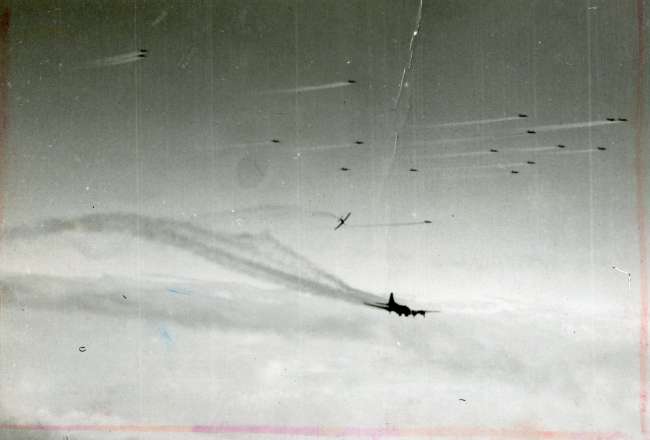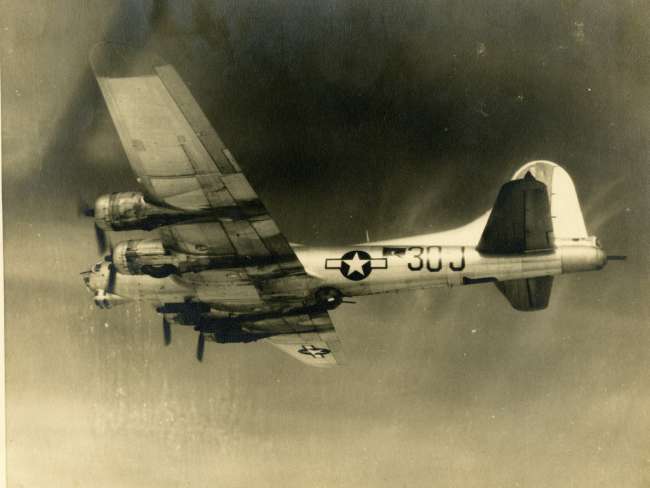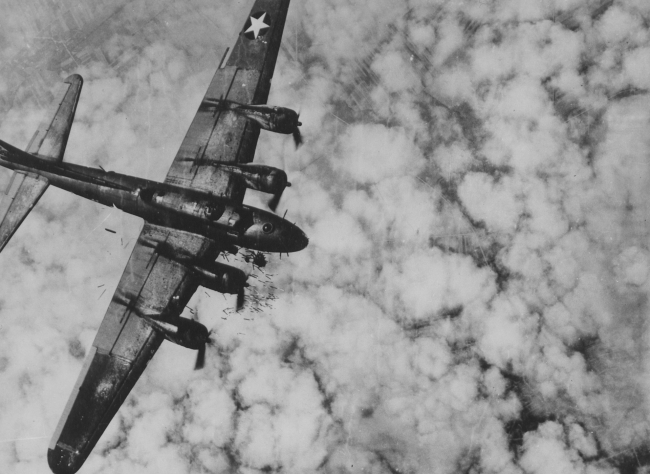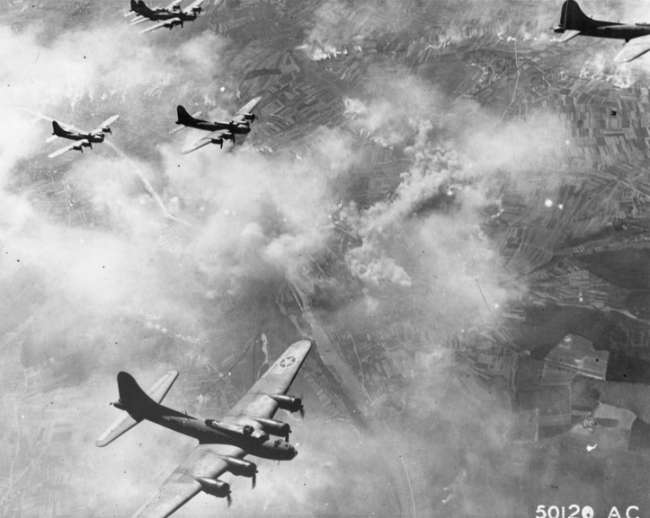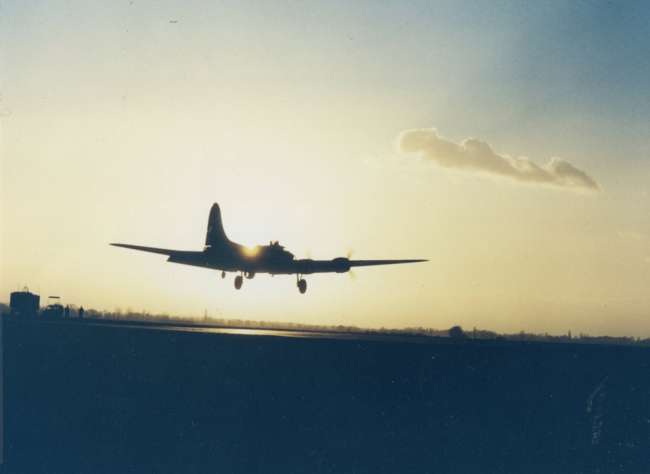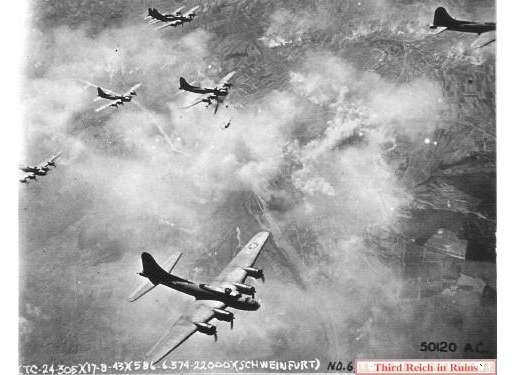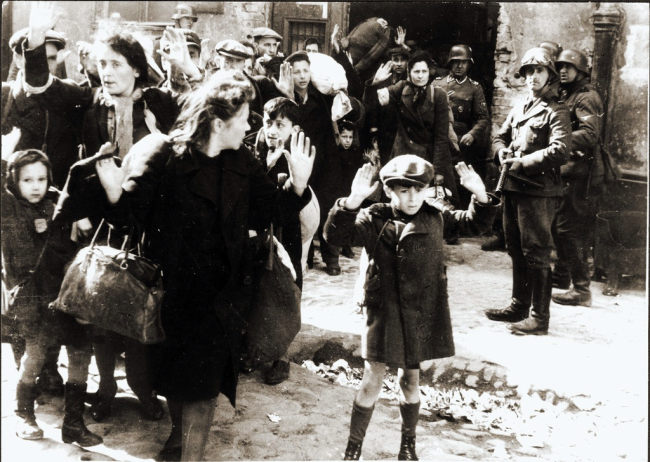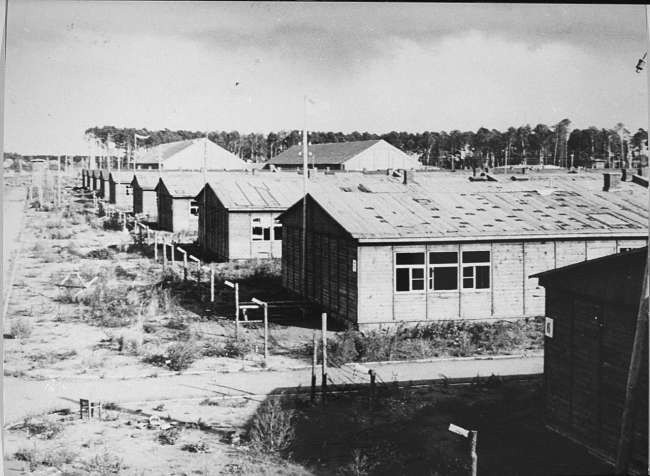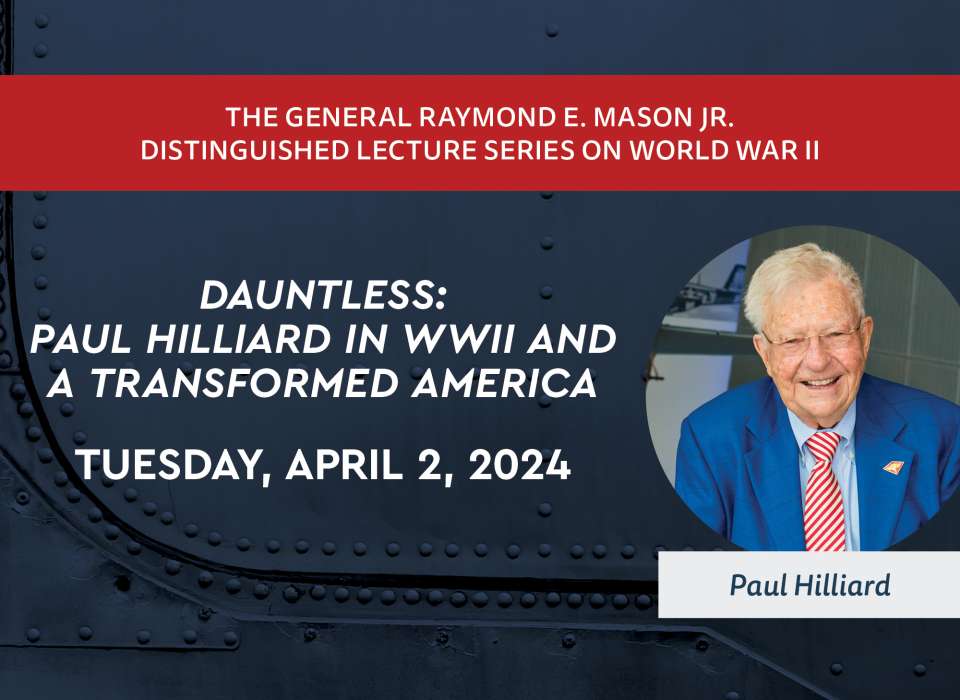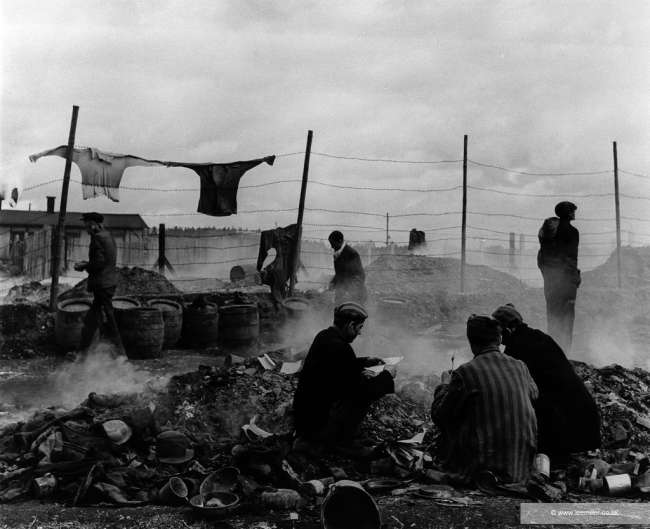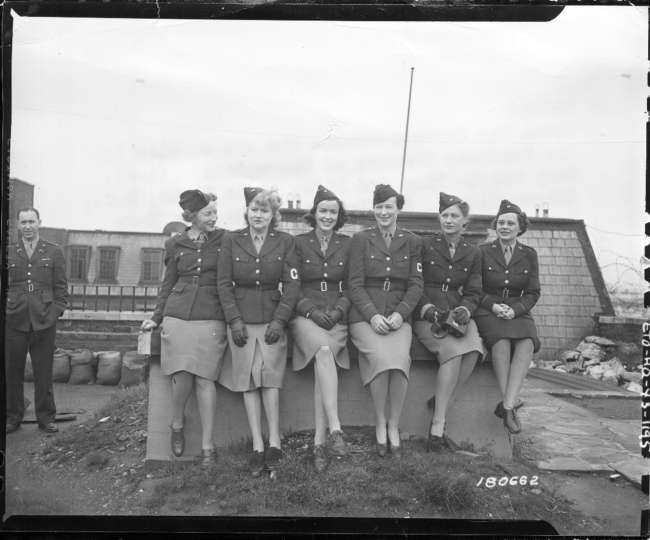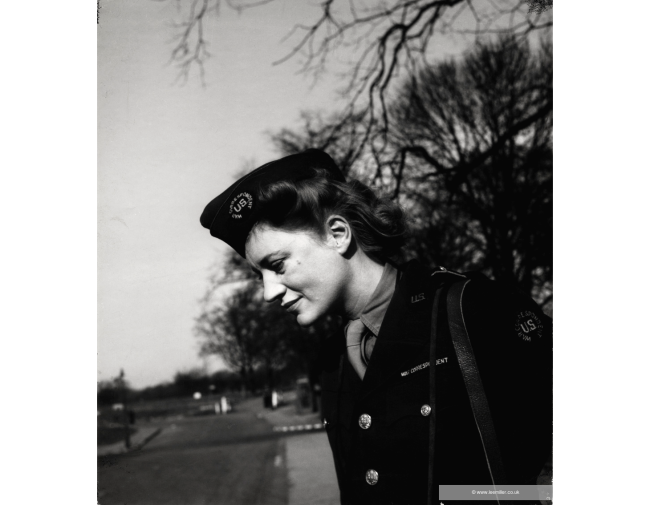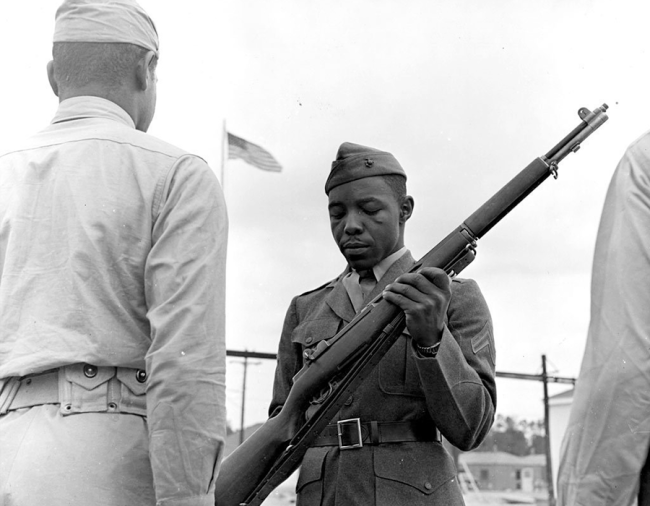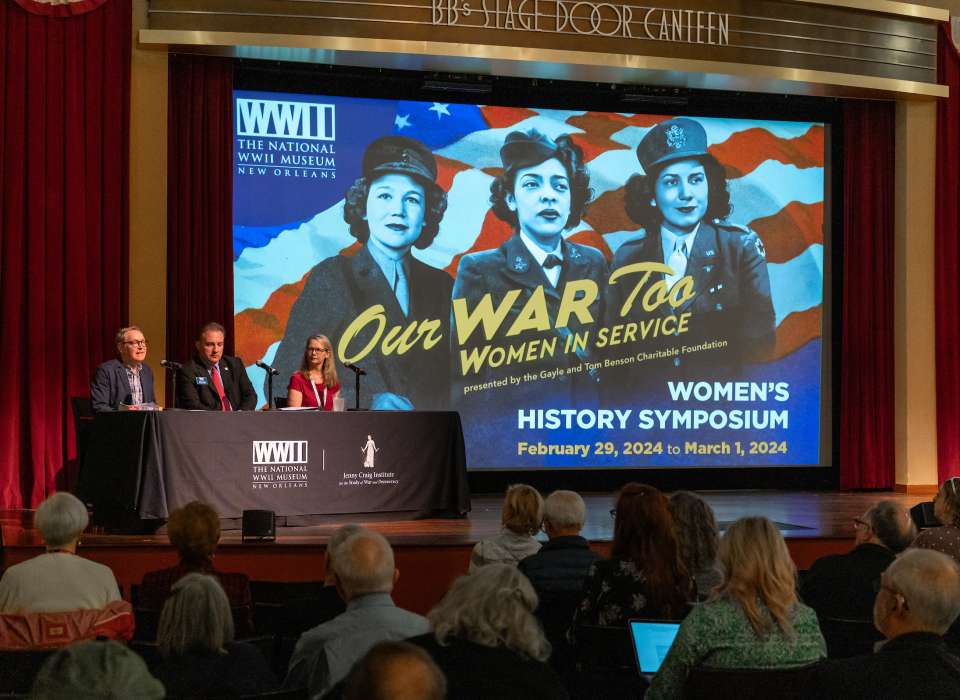Top Photo: A B-17 Flying Fortress of the Eighth Air Force's 100th Bomb Group flying toward Germany, Feb. 28, 1945. National Archives at College Park (U.S. Air Force Number 59349AC)
In most military services, there are usually those units that stand out as unlucky, unfortunate, or destined for unfortunate consequences. Either by mission, assignment, or the fates, such hapless organizations often achieve a kind of legendary yet revered status among its sister units. The US Army’s 101st Airborne Division at Bastogne, USS Indianapolis, after delivering the atomic bomb to Tinian, or the 1st Marine Division at Guadalcanal, are examples of military units experiencing exceptional hardship but being treated with sympathetic yet reverent tones. For the US Army Air Forces during World War II, this kind of reputation was earned by members of the Eighth Air Force’s 100th Bomb Group (BG).
As a part of the Combined Bomber Offensive (CBO) over Europe, the “Bloody 100th” appeared to suffer disproportionately at the hands of the German Luftwaffe, with its members both respected and pitied by fellow bomber crews. Its reputation was well known throughout VIII Bomber Command as a jinxed unit, with the chances of surviving a tour of 25 missions appearing as a dim possibility. Highlighting this expectation in late 1943, a new airman was assigned to the 100th BG. Upon receipt of his posting, he told a companion while sobbing, “I’m not going to make it…they just put me in the 100th Group. I haven’t got a chance.”
Established on January 28, 1942, and activated on June 1, the Group’s personnel began to assemble at Walla Walla Army Air Base in Washington; the unit was subsequently stationed at several different locations. Despite its activation earlier in the year, the unit did not receive its first B-17 “Flying Fortress” bombers until November. At the same time the new planes arrived, the unit organized itself into four squadrons, with Colonel Darr H. Alkire as its first commander. Alkire was a stern commander who painted a grim picture of what lay ahead. Addressing the crews, he said, “Don’t get the notion that your job is going to be glorious or glamorous…you’ve got dirty work to do, you might as well face the facts. You’re going to be baby-killers and women-killers.”
With a full complement of 37 aircraft, the men of the 100th began to familiarize themselves with their new mounts as they jumped from base to base with a training schedule that was disjointed and poorly coordinated. Instead of developing their individual and collective skills, aircrews took advantage of the lack of oversight and sought more puerile pursuits over professional. Taking their liberties, many of the crews were overconfident in their skills and airmanship. Such hubris led one 100th BG navigator to quip, “We were all conceited and quite impossible. We were undertrained and not as good as we thought we were.”
By early 1943, the unit prepared for movement overseas. As part of their pre-deployment inspection, the Group conducted a long-range training exercise. Finally consolidated at Kearney Field, Nebraska on April 20, 1943, 21 crews of the 100th were supposed to fly some 1,300 miles from their home base to Hamilton Field near Novato, California. However, given their ill-disciplined nature and patchwork training, the exercise was a fiasco, and the unit scattered across the western United States. While some bombers made it to California, three ended up in Las Vegas—to include an embarrassed Col. Alkire. One bomber went in the opposite direction and landed instead at Smyrna, Tennessee! Given that the pilot’s wife just happened to be in Smyrna, the crew’s wrong-way journey was probably not a gross navigation error. As a result of the failed exercise, Alkire was fired under the charge of incompetence and replaced with Colonel Howard M. Turner. Despite this change of command, such antics and a relaxed attitude would still be part of the unit’s culture.
Given its poor showing, the unit received remedial training at Wendover Field, Utah. Here it conducted intense navigation, bombing, gunnery, and formation exercises, and was eventually placed on the list of operational units. At the end of May, they traversed the North Atlantic and arrived in the United Kingdom on June 9. Flying over the green fields of England, the 36 bombers and aircrews of the 100th eventually made their way to the unit’s home base, Station 139, located at Thorpe Abbotts in East Anglia. Located 20 miles south of Norwich and 90 miles northeast of London, Thorpe Abbotts was one of the hundred-odd airfields used by the Eighth Air Force in the United Kingdom during the war.
The aerodrome included three intersecting runways and 50 hardstands, with an accompanying bomb dump, communal sites, technical areas, a control tower, and an officer’s club dubbed the “Silver Wings.” With a bar, poker tables, and a library, the club served as the social hub of the base. The building’s ceiling was soon marked by “smoking,” the practice of using candle or cigarette smoke to spell out the name of targets the Group attacked. This was a common ritual for bomber groups celebrating their actions and survival. Included in the bar was a traffic light; red signified no flying was scheduled, yellow meant a possible mission, and green indicated that a sortie was in the offing.
The Group flew its first mission on June 22, but it was merely a diversion flight over the North Sea. However, three days later the 100th conducted its first combat mission against targets in Bremen and the surrounding area. Flying in a formation comprised of 275 bombers, the 100th sent 17 B-17 crews, who sighted their first German fighters while also receiving their initial barrage of ground-based Luftwaffe Fliegerabwehrkanone (flak). In total, 18 bombers were lost, with the 100th losing three. The baptism by fire had a sobering effect as the Group’s downed bombers each took ten men with them. Killed or captured, the loss of 30 airmen underscored the deadly and unforgiving nature of the air war.
A few days later, Col. Turner was transferred to the 1st Air Division and was subsequently replaced by Colonel Neil “Chick” Harding, a West Point graduate and the school’s football coach before the war. A veteran of the interwar public relations flights to South America proving the efficacy of airpower, Harding was a seasoned aviator who emulated much of the attitude of the 100th. Short, round, and affable, he was a popular figure. With a penchant for alcohol, he was no disciplinarian, and often saw fistfights and emotional outbursts as a way to release the strain of combat. Understanding the human element of war, he was fond of saying his men were made of “flesh and brain” and exhibited an appreciation for his crew’s mental and emotional well-being. Given this disposition and concern, he was widely respected by the command and saw it through some of its darkest days.
Harding was just one of many colorful characters assigned to the 100th. Two of the squadron commanders, Majors John “Bucky” Egan of the 418th Bomb Squadron (BS) and Gale “Buck” Cleven of the 350th, exuded the dash and audacity often associated with aviators. Their skills as pilots were matched by their personalities. Both were described as “debonair”; with white scarves and a Hollywood swagger, they were frequently the center of attention at the Silver Wing. Larger than life, other pilots idolized them as both served as the “heart and soul” of the Group. When then-Brigadier General Curtis LeMay, Commander of the 3rd Air Division, came for an inspection of the 350th, Cleven was absent. When LeMay inquired as to the squadron commander’s whereabouts, the senior enlisted airmen reported that Cleven had “taken to the woods.” His “partner in crime” Egan was a charmer who was often found in nearby pubs drinking the local ale and singing songs with the patrons. Both their character and antics, combined with Harding’s style of command, set the tone for the 100th during the early days of combat.
After Harding assumed command, the Group took part in a 12-hour mission to bomb German U-Boat pens in Trondheim, Norway. The 1,900-mile flight traversed mostly over the waters of the North Sea. Given this aquatic-dominated route, the lead navigator, 1st Lt Harry Crosby, was unable to make pilotage checks of off ground references. The young navigator felt the full weight of his responsibilities leading the 63-plane formation. Fortunately, Crosby’s calculations were accurate, and the bombers hit the target. On the way home, Crosby deviated from the planned route due to weather and then realized he did not make the required radio/position reports. Upon landing, he was summoned to the Group operations hut, expecting to be in line for a court martial. However, his radio silence and change in the return route prevented German interceptors from getting a fix on the bomber formation, and in an ironic twist of fate, he was awarded the Distinguished Flying Cross for his actions that day.
A romantic at heart, Crosby was famous for another mission weeks later. On August 11, Crosby was at Thorpe Abbotts listening to classical music. His selection that day was Beethoven’s Third and Fifth Symphonies, and he had just learned that Beethoven was born and educated in Bonn, Germany. The next day, Crosby was the lead navigator for a mission over the Ruhr Valley, but the primary target was obscured by clouds. Unable to drop their bombs, the formation proceeded to the next target available, the city of Bonn. At 25,000 feet, as the formation lined up at the initial point for the bomb run, Crosby realized it was where Beethoven had attended school. With this epiphany, he called over the plane’s intercom, “…we can’t bomb Bonn!” As a result, 63 B-17s flew over the target with bomb bay doors open and none of them dropping their payloads. He then provided a new heading and set course for the marshalling yards in Cologne. When LeMay was informed of Crosby’s action, Col. Harding asked the General if he wanted to talk to the tender-hearted navigator. LeMay replied, “No, for Christ’s sake, keep him out of my sight!”
A few days later the Group participated in one of its bloodiest missions that helped cement part of its infamous reputation. On August 17, 1943, the 4th Bomb Wing conducted the first shuttle mission flying from East Anglia, bombing the German aircraft factory at Regensburg, and then continuing to North Africa. Flying in the low and trailing squadron in the larger bomber formation, the 100th flew in what was often referred to as “Purple Heart corner.” German fighters often attacked the bombers at this location first and then worked their way up. While the Division successfully hit the target, the Regensburg force lost 24 bombers. The 100th alone lost nine of the 22 planes it launched that day—a 40 percent loss rate. During this raid, the 100th suffered the most of any other Group.
In addition to these losses, supposedly Captain Robert Knox of the 418th BS, flying in a B-17 christened Picklepuss, lost two engines and straggled out of the formation. Singled out by Luftwaffe fighters, Knox reportedly lowered his landing gear in a recognized gesture of aerial surrender. While escorted by the Luftwaffe to a German aerodrome, the bomber’s second engine recovered and Knox allegedly raised his gear and dashed for home, while the gunners engaged the escorting fighters. Despite this attempt to escape, the bomber crashed with the crew either killed or captured. Given this purported violation of aerial diplomacy, the legend grew that the 100th was now specifically targeted by the Luftwaffe for this egregious act. While a highly dubious (and inaccurate) claim, this story circulated around bomber bases and helped establish the Group’s hard luck reputation.
However, the August 17 shuttle mission was not without its humor. Landing in Africa, the unit found spartan accommodation but eventually pieced itself back together for the return home. Before departure, 1st Lt Owen “Cowboy” Roane, flying in a B-17 named Laden Maden, acquired a donkey and decided to make the animal a mascot. He smuggled the donkey aboard and wrapped it in blankets to keep it warm while at altitude. Upon approach to the airfield at Thorpe Abbotts, Roane radioed, “I’m coming in with a frozen ass!” Upon landing, the bomber was met by ambulances thinking the crew had frostbite injuries. Opening the plane’s hatch, the only frozen passenger was a tiny African ass named “Mohammed” (Mo for short)! This was a serious breach of British customs and agricultural law, and host nation officials did not find it a laughing matter. Despite the legal wrangling, the matter was finally settled when the donkey eventually succumbed to the vagaries of English weather.
Perhaps no other mission cemented the reputation of the 100th more than the Munster raid of October 10. Targeting worker’s housing in the Ruhr Valley, the Group launched 13 planes, with one flown by a reflective and scholarly 1st Lt Robert Rosenthal. At 25, “Rosie” was older than most of the pilots and trained as a lawyer before enlisting. More importantly, he was Jewish and, clearly understanding the Nazi threat, he saw his service as a moral obligation. While en route to the target, the Group experienced the most violent Luftwaffe attacks yet seen as bombers took hits from both flak and fighters. As the formation made its way to the initial point, planes of the 100th were downed one by one. Only Rosie made it to the target. With his own plane hit, he continued the bomb run. He dropped his payload while also losing two engines, the intercom, and oxygen systems. As the only plane of the 13 launched returning to Thorpe Abbotts, “Rosie” soon earned a legendary status. His reputation would continue to grow as he completed two tours of duty, was shot down twice, evaded capture, and earned the Distinguished Service Cross, two Silver Stars, two Distinguished Flying Crosses (plus the British equivalent), and two Purple Hearts. Despite Rosie’s bravery and airmanship that day, with the Group’s losses over Munster, the 100th was now firmly labeled a jinxed unit.
While the 100th was given the reputation as a hard-luck unit, such a distinction was more myth than reality. Over the course of the war, the Group did not suffer statistically more than any other and in some missions came away unscathed. Given the losses of the Eighth Air Force over the conduct of the CBO, most bomber groups sustained losses at a relatively even rate. However, the Regensburg and Munster raids created a perception that was hard to shake. In addition to those missions, the colorful personalities that filled the ranks of the unit added to its unique reputation. Men like Chick Harding, the two “Bucks,” “Cowboy” Roane, Harry Crosby, and “Rosie” Rosenthal all added to the unit’s distinct history and reputation. The collection of missions, actions, and personalities created a synergy making the 100th Bomb Group one of the most storied units of World War II.
References:
- Craven, Wesley Frank, and James Lea Cate, The Army Air Forces in World War II, Volume Two Europe: Torch to Pointblank August 1942 to December 1943. Chicago: University of Chicago Press, 1949.
- Crosby, Harry. A Wing and a Prayer: The “Bloody 100th” Bomb Group of the US Eighth Air Force in Action Over Europe in World War II. New York: Harper Collins, 1993.
- Freeman, Roger A. The Mighty Eighth: A History of the Units, Men, and Machines of the US 8th Air Force. New York: Orion Books, 1970.
- -----------, The Mighty Eighth War Manual. London: Cassel, 2001.
- Jablonski, Edward. Flying Fortress: The Illustrated Biography of the B-17s and the Men Who Flew Them. New York: Doubleday and Co, 1965.
- Maurer, Kevin. Damn Lucky: One Man’s Courage During the Bloodiest Military Campaign in Aviation History. New York: St. Martins, 2022.
- Maurer, Maurer, Air Force Combat Units of World War II. Washington D.C.: Office of Air Force History, 1983.
- Miller, Donald. Masters of the Air: America’s Bomber Boys Who Fought The Air War Against Nazi Germany. New York: Simon and Schuster, 2006.
Making Masters of the Air Podcast
Join The National WWII Museum each week for the Making Masters of the Air podcast presented by Boeing to dive deeper into the making of Masters of the Air and explore the history behind the Apple TV+ series. The Making Masters of the Air podcast is co-hosted by Playtone’s Kirk Saduski and Donald Miller, author of the book Masters of the Air.
New podcast episodes available Fridays.
Subscribe now via Apple Podcasts or Spotify.
John Curatola, PhD
John Curatola is the Samual Zemurray-Stone Senior Historian at the National World War II Museum in New Orleans, Louisiana.
